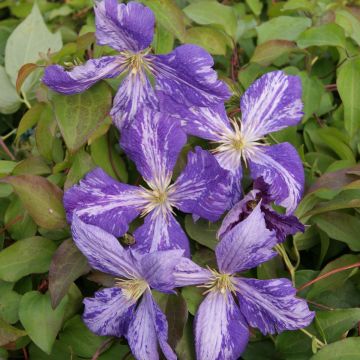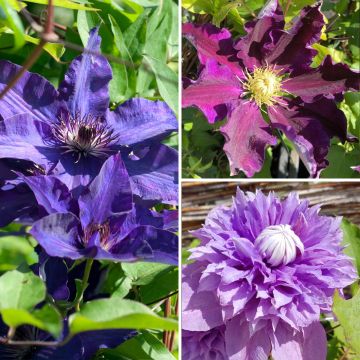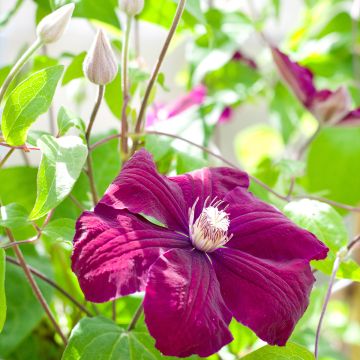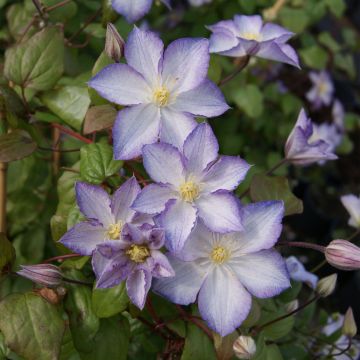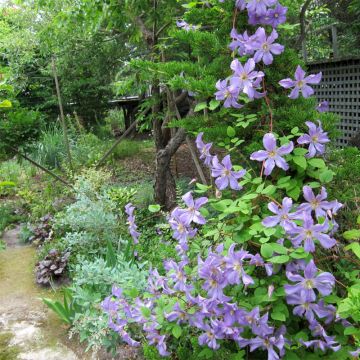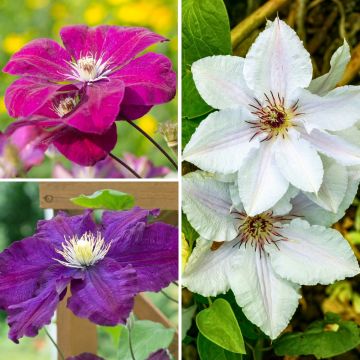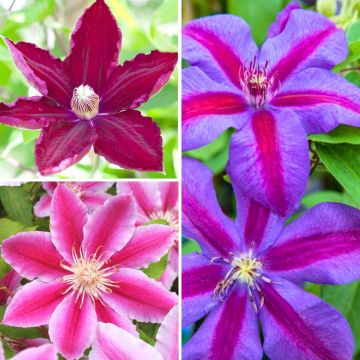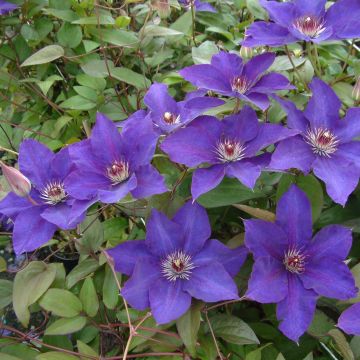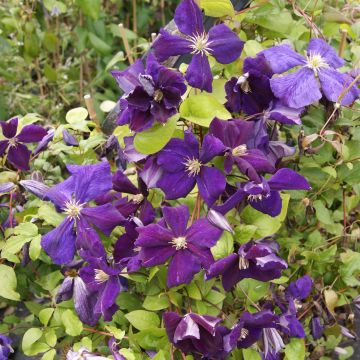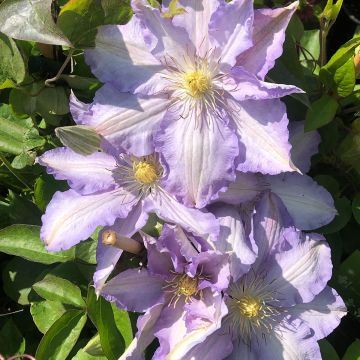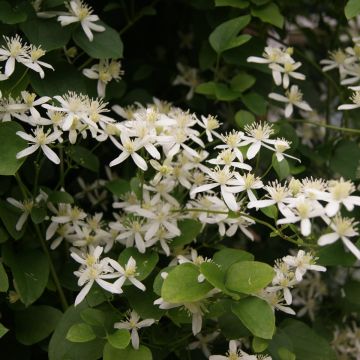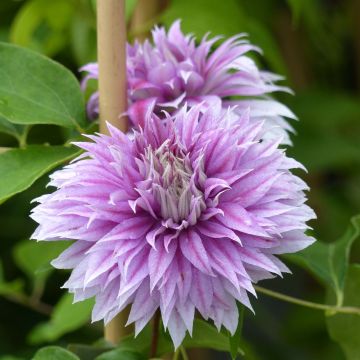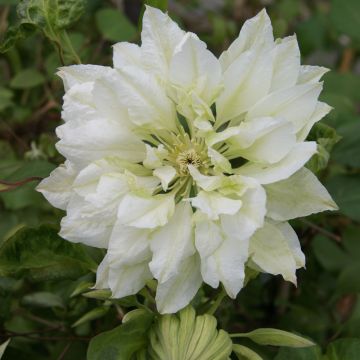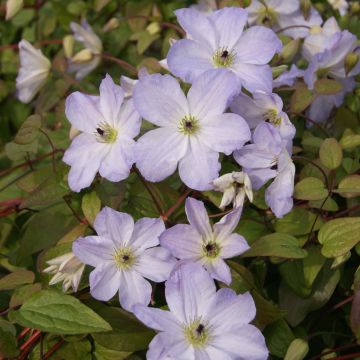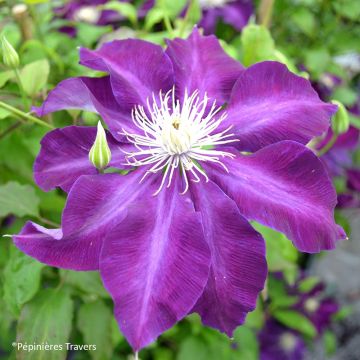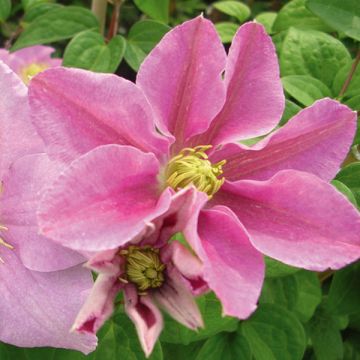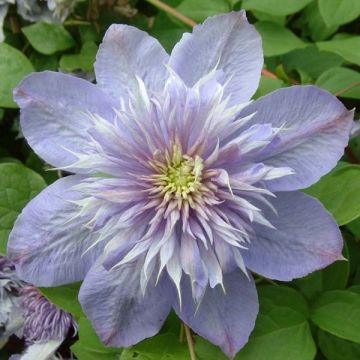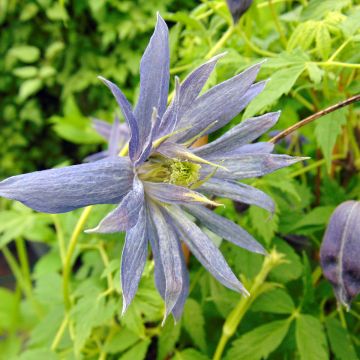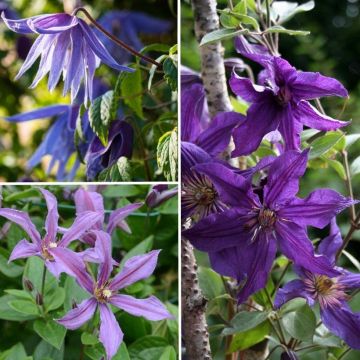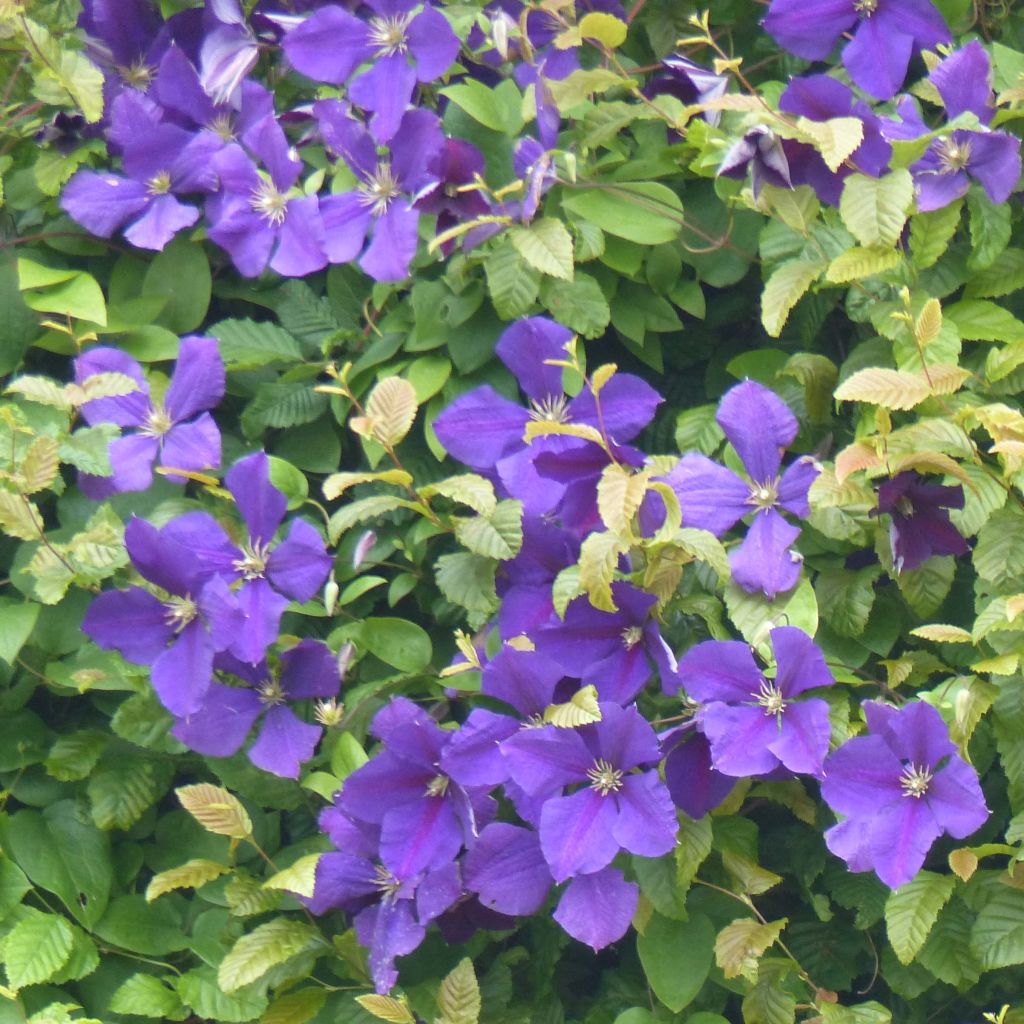

Clematis jackmanii - Clematis vine
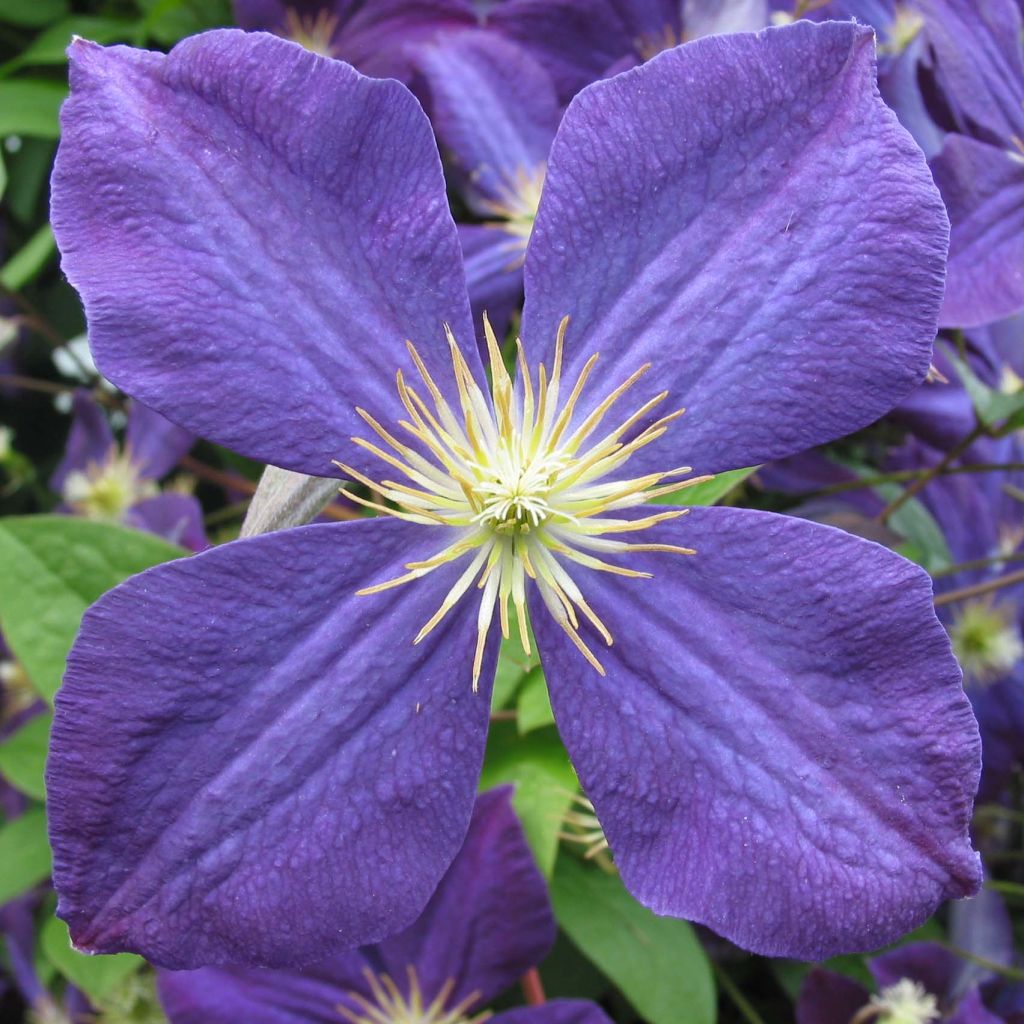

Clematis jackmanii - Clematis vine
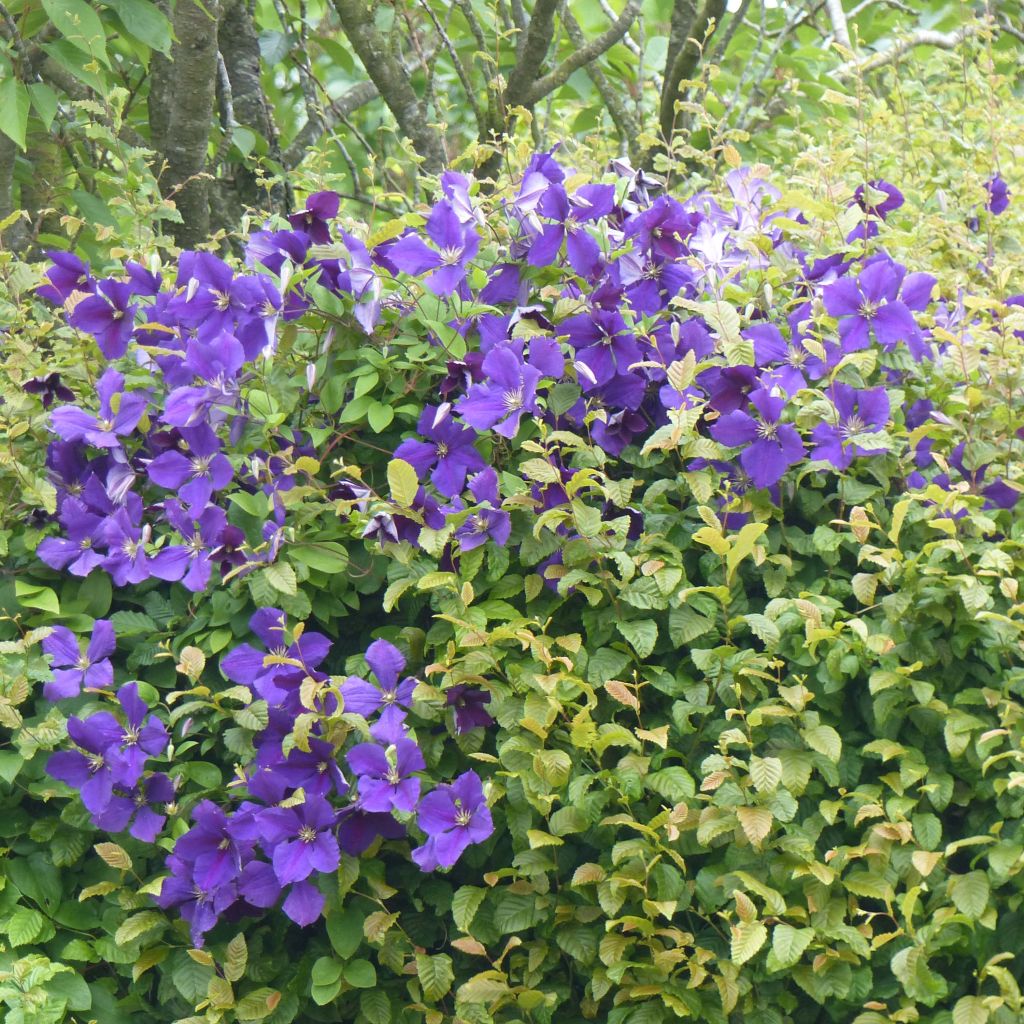

Clematis jackmanii - Clematis vine
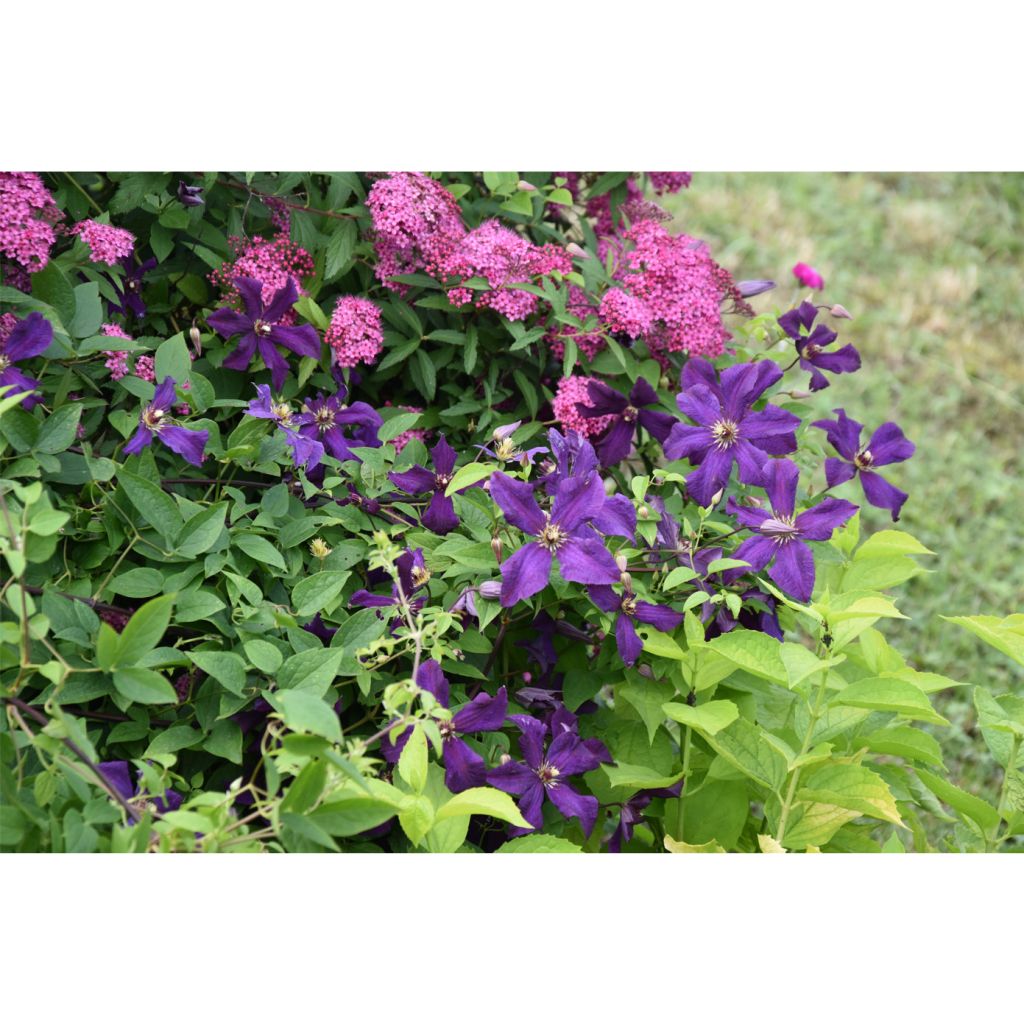

Clematis jackmanii - Clematis vine
Clematis jackmanii - Clematis vine
Clematis jackmanii
Jackman's clematis
This item cannot be shipped to the selected country
Delivery charge from €5.90
More information
Schedule delivery date,
and select date in basket
This plant carries a 6 months recovery warranty
More information
We guarantee the quality of our plants for a full growing cycle, and will replace at our expense any plant that fails to recover under normal climatic and planting conditions.
From €5.90 for pickup delivery and €6.90 for home delivery
Express home delivery from €8.90.


Does this plant fit my garden?
Set up your Plantfit profile →
Description
Clematis 'Jackmanii' has won the hearts of gardeners around the world with its astonishing ability to flower and grow almost anywhere. It displays an abundance of spectacular star-shaped flowers in a rich purple colour, centred around a small bouquet of white-cream stamens. This climbing plant is bushy, dense and compact, adorned with deciduous foliage, ranging from medium green to dark green. This legendary clematis is fully hardy and undemanding, making it suitable for all regions.
Clematis belong to the Ranunculaceae family. They are found in both hemispheres, especially in Europe, the Himalayas, China, Australia, and North and Central America. The 'Jackmanii' variety was first introduced in England in 1862. This horticultural hybrid is the result of a cross-breeding between C. lanuginosa, a Chinese plant with immense flowers, C. viticella 'Atrorubens', native to southern Europe with bell-shaped carmine flowers, and an old English hybrid of C. diversifolia dating back to 1835, with flowers consisting of 4 violet-purple sepals. It is easy to understand why Jackman's clematis, with its exceptional genetic heritage, combines so many qualities and demonstrates remarkable adaptability to different growing conditions.
It is a perennial semi-woody climbing plant that will reach a height of 3 to 4m (10 to 13ft), with a minimum spread of 1m (3ft). This clematis bears large star-shaped flowers, reaching up to 15cm (6in) in diameter, which appear in successive waves on the current year's shoots, from June to the end of summer. The flowers are solitary or grouped in clusters. They have 4 to 6 purple-violet petals that slightly overlap. The centre of the flower is adorned with a beautiful crown of cream stamens. The flowering is followed by decorative silvery-grey feathery fruits that persist until winter. The glabrous leaves are divided into 3 leaflets, ranging from bright green to dark green. This clematis clings to the support or host plant through petioles transformed into tendrils.
Plant your clematis alongside climbing roses to extend the flowering period until the end of summer. It is a diverse genus, with flowers in all colours, shapes, and sizes. Take advantage of their easy cultivation to give your garden a romantic and bohemian touch.
Tips: avoid excessive use of fertilisers that stimulate foliage growth at the expense of flowers. Do not mulch in order to avoid excessive moisture that promotes wilting disease.
Report an error about the product description
Clematis jackmanii - Clematis vine in pictures
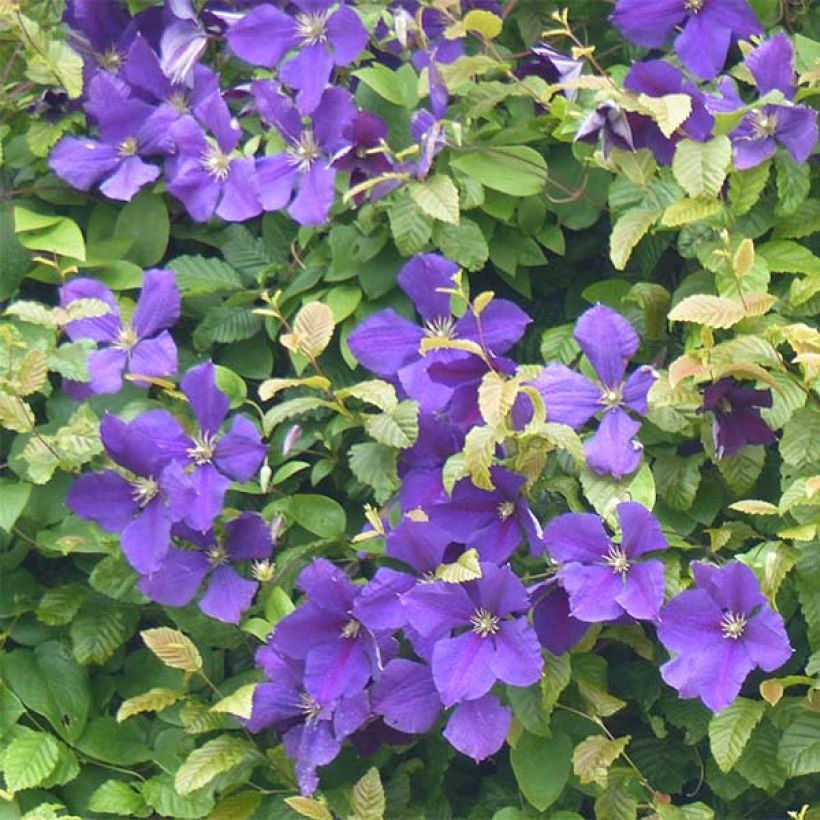

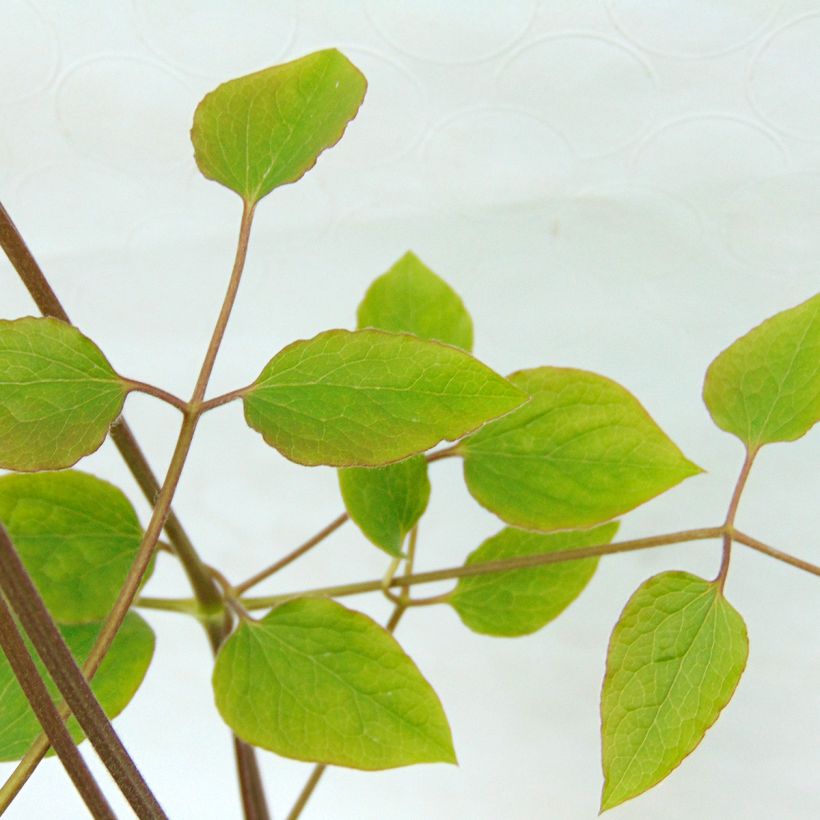

Plant habit
Flowering
Foliage
Botanical data
Clematis
jackmanii
Ranunculaceae
Jackman's clematis
Cultivar or hybrid
Other Clematis Jackmanii
Planting and care
Plant Clematis 'Jackmanii' in a sunny or lightly shaded position. Plant it in fertile, humus-rich, well-drained soil, shading the roots and base of the stem (with a flat tile, for example). Clematis wilts in excessively moist soil. Work the soil to a depth of 20cm (8in), and lighten it with good compost and coarse sand. Position the plant and cover the root ball with 3cm (1in) of soil. After planting, cut back the clematis stems to about 30cm (12in) above a nice pair of buds. Water generously and regularly during the first few weeks. Do not let water stagnate as this can lead to the development of a fungus at the collar.
Mulch all clematis plants in February with garden compost or well-rotted manure, avoiding direct contact with the stems. Train the stems, without constricting them, until the plant can grip onto supports by itself. Clematis plants also like to grow freely on neighbouring plants.
After a few years, cover the base of your climbing clematis with a small mound of soil to reduce the risk of wilting while also promoting the growth of vigorous shoots from the stump.
Voles and grey worms can attack clematis plants and eat the stems. Aphids and greenhouse whiteflies are also potential parasites of clematis plants.
Planting period
Intended location
Care
-
, onOrder confirmed
Reply from on Promesse de fleurs
Clematis
Haven't found what you were looking for?
Hardiness is the lowest winter temperature a plant can endure without suffering serious damage or even dying. However, hardiness is affected by location (a sheltered area, such as a patio), protection (winter cover) and soil type (hardiness is improved by well-drained soil).

Photo Sharing Terms & Conditions
In order to encourage gardeners to interact and share their experiences, Promesse de fleurs offers various media enabling content to be uploaded onto its Site - in particular via the ‘Photo sharing’ module.
The User agrees to refrain from:
- Posting any content that is illegal, prejudicial, insulting, racist, inciteful to hatred, revisionist, contrary to public decency, that infringes on privacy or on the privacy rights of third parties, in particular the publicity rights of persons and goods, intellectual property rights, or the right to privacy.
- Submitting content on behalf of a third party;
- Impersonate the identity of a third party and/or publish any personal information about a third party;
In general, the User undertakes to refrain from any unethical behaviour.
All Content (in particular text, comments, files, images, photos, videos, creative works, etc.), which may be subject to property or intellectual property rights, image or other private rights, shall remain the property of the User, subject to the limited rights granted by the terms of the licence granted by Promesse de fleurs as stated below. Users are at liberty to publish or not to publish such Content on the Site, notably via the ‘Photo Sharing’ facility, and accept that this Content shall be made public and freely accessible, notably on the Internet.
Users further acknowledge, undertake to have ,and guarantee that they hold all necessary rights and permissions to publish such material on the Site, in particular with regard to the legislation in force pertaining to any privacy, property, intellectual property, image, or contractual rights, or rights of any other nature. By publishing such Content on the Site, Users acknowledge accepting full liability as publishers of the Content within the meaning of the law, and grant Promesse de fleurs, free of charge, an inclusive, worldwide licence for the said Content for the entire duration of its publication, including all reproduction, representation, up/downloading, displaying, performing, transmission, and storage rights.
Users also grant permission for their name to be linked to the Content and accept that this link may not always be made available.
By engaging in posting material, Users consent to their Content becoming automatically accessible on the Internet, in particular on other sites and/or blogs and/or web pages of the Promesse de fleurs site, including in particular social pages and the Promesse de fleurs catalogue.
Users may secure the removal of entrusted content free of charge by issuing a simple request via our contact form.
The flowering period indicated on our website applies to countries and regions located in USDA zone 8 (France, the United Kingdom, Ireland, the Netherlands, etc.)
It will vary according to where you live:
- In zones 9 to 10 (Italy, Spain, Greece, etc.), flowering will occur about 2 to 4 weeks earlier.
- In zones 6 to 7 (Germany, Poland, Slovenia, and lower mountainous regions), flowering will be delayed by 2 to 3 weeks.
- In zone 5 (Central Europe, Scandinavia), blooming will be delayed by 3 to 5 weeks.
In temperate climates, pruning of spring-flowering shrubs (forsythia, spireas, etc.) should be done just after flowering.
Pruning of summer-flowering shrubs (Indian Lilac, Perovskia, etc.) can be done in winter or spring.
In cold regions as well as with frost-sensitive plants, avoid pruning too early when severe frosts may still occur.
The planting period indicated on our website applies to countries and regions located in USDA zone 8 (France, United Kingdom, Ireland, Netherlands).
It will vary according to where you live:
- In Mediterranean zones (Marseille, Madrid, Milan, etc.), autumn and winter are the best planting periods.
- In continental zones (Strasbourg, Munich, Vienna, etc.), delay planting by 2 to 3 weeks in spring and bring it forward by 2 to 4 weeks in autumn.
- In mountainous regions (the Alps, Pyrenees, Carpathians, etc.), it is best to plant in late spring (May-June) or late summer (August-September).
The harvesting period indicated on our website applies to countries and regions in USDA zone 8 (France, England, Ireland, the Netherlands).
In colder areas (Scandinavia, Poland, Austria...) fruit and vegetable harvests are likely to be delayed by 3-4 weeks.
In warmer areas (Italy, Spain, Greece, etc.), harvesting will probably take place earlier, depending on weather conditions.
The sowing periods indicated on our website apply to countries and regions within USDA Zone 8 (France, UK, Ireland, Netherlands).
In colder areas (Scandinavia, Poland, Austria...), delay any outdoor sowing by 3-4 weeks, or sow under glass.
In warmer climes (Italy, Spain, Greece, etc.), bring outdoor sowing forward by a few weeks.

































